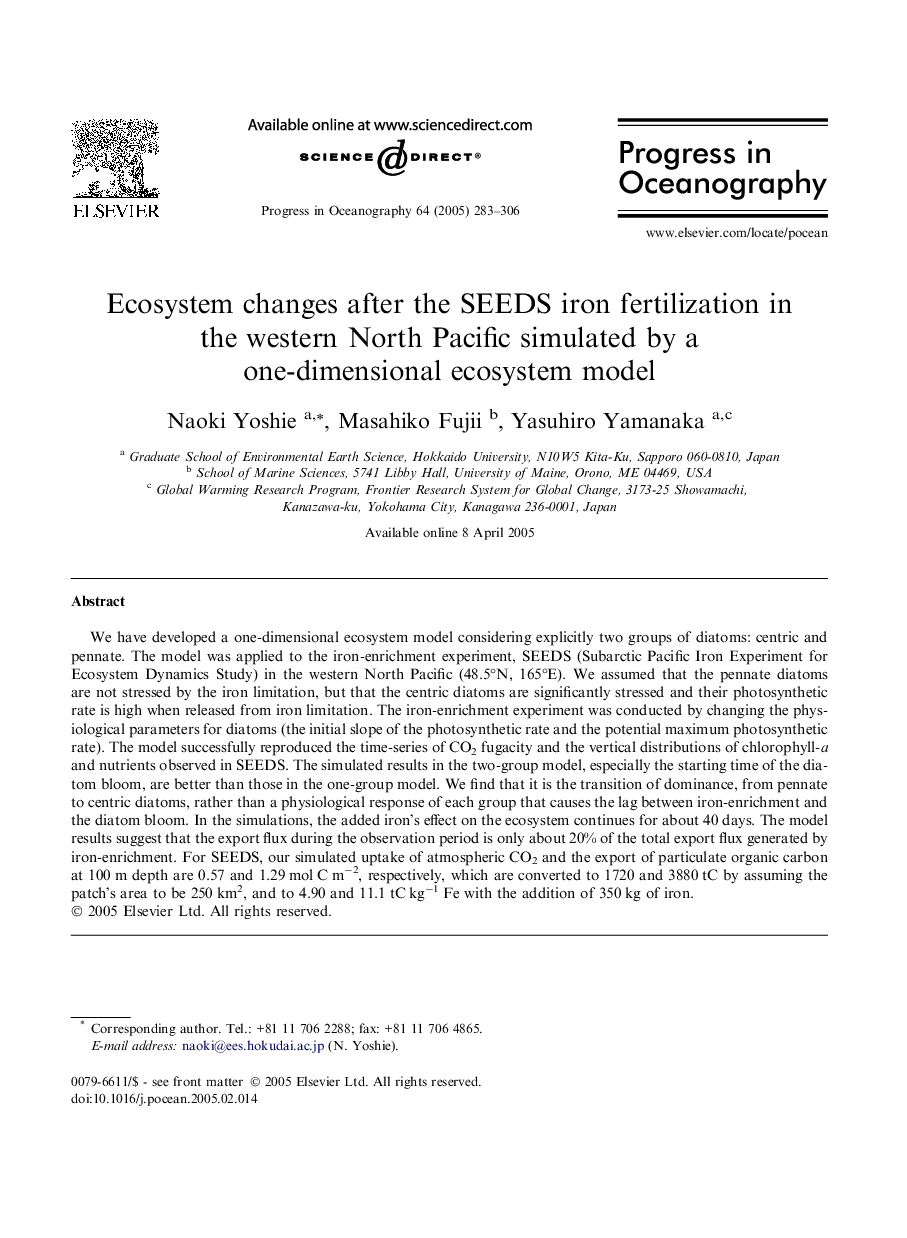| کد مقاله | کد نشریه | سال انتشار | مقاله انگلیسی | نسخه تمام متن |
|---|---|---|---|---|
| 9485116 | 1627982 | 2005 | 24 صفحه PDF | دانلود رایگان |
عنوان انگلیسی مقاله ISI
Ecosystem changes after the SEEDS iron fertilization in the western North Pacific simulated by a one-dimensional ecosystem model
دانلود مقاله + سفارش ترجمه
دانلود مقاله ISI انگلیسی
رایگان برای ایرانیان
موضوعات مرتبط
مهندسی و علوم پایه
علوم زمین و سیارات
زمین شناسی
پیش نمایش صفحه اول مقاله

چکیده انگلیسی
We have developed a one-dimensional ecosystem model considering explicitly two groups of diatoms: centric and pennate. The model was applied to the iron-enrichment experiment, SEEDS (Subarctic Pacific Iron Experiment for Ecosystem Dynamics Study) in the western North Pacific (48.5°N, 165°E). We assumed that the pennate diatoms are not stressed by the iron limitation, but that the centric diatoms are significantly stressed and their photosynthetic rate is high when released from iron limitation. The iron-enrichment experiment was conducted by changing the physiological parameters for diatoms (the initial slope of the photosynthetic rate and the potential maximum photosynthetic rate). The model successfully reproduced the time-series of CO2 fugacity and the vertical distributions of chlorophyll-a and nutrients observed in SEEDS. The simulated results in the two-group model, especially the starting time of the diatom bloom, are better than those in the one-group model. We find that it is the transition of dominance, from pennate to centric diatoms, rather than a physiological response of each group that causes the lag between iron-enrichment and the diatom bloom. In the simulations, the added iron's effect on the ecosystem continues for about 40 days. The model results suggest that the export flux during the observation period is only about 20% of the total export flux generated by iron-enrichment. For SEEDS, our simulated uptake of atmospheric CO2 and the export of particulate organic carbon at 100 m depth are 0.57 and 1.29 mol C mâ2, respectively, which are converted to 1720 and 3880 tC by assuming the patch's area to be 250 km2, and to 4.90 and 11.1 tC kgâ1 Fe with the addition of 350 kg of iron.
ناشر
Database: Elsevier - ScienceDirect (ساینس دایرکت)
Journal: Progress in Oceanography - Volume 64, Issues 2â4, FebruaryâMarch 2005, Pages 283-306
Journal: Progress in Oceanography - Volume 64, Issues 2â4, FebruaryâMarch 2005, Pages 283-306
نویسندگان
Naoki Yoshie, Masahiko Fujii, Yasuhiro Yamanaka,